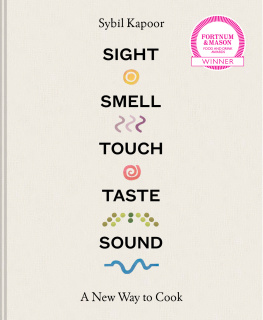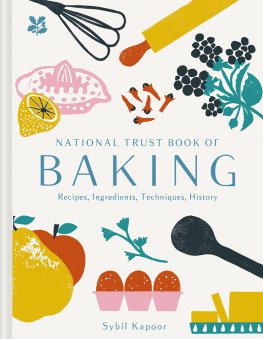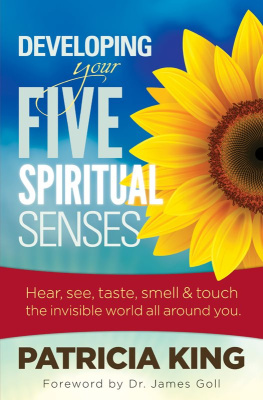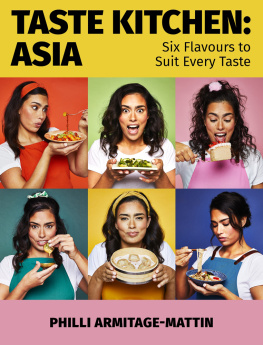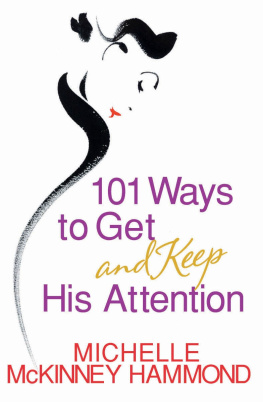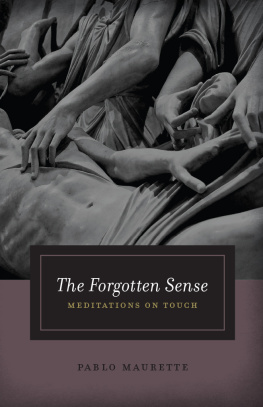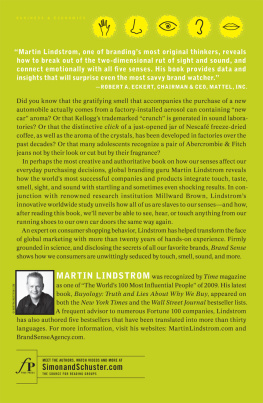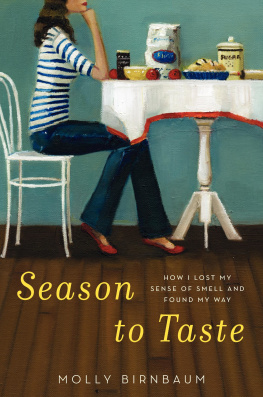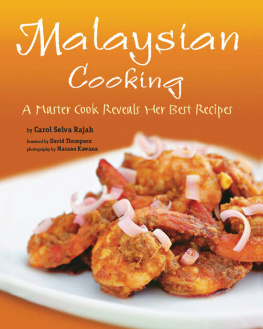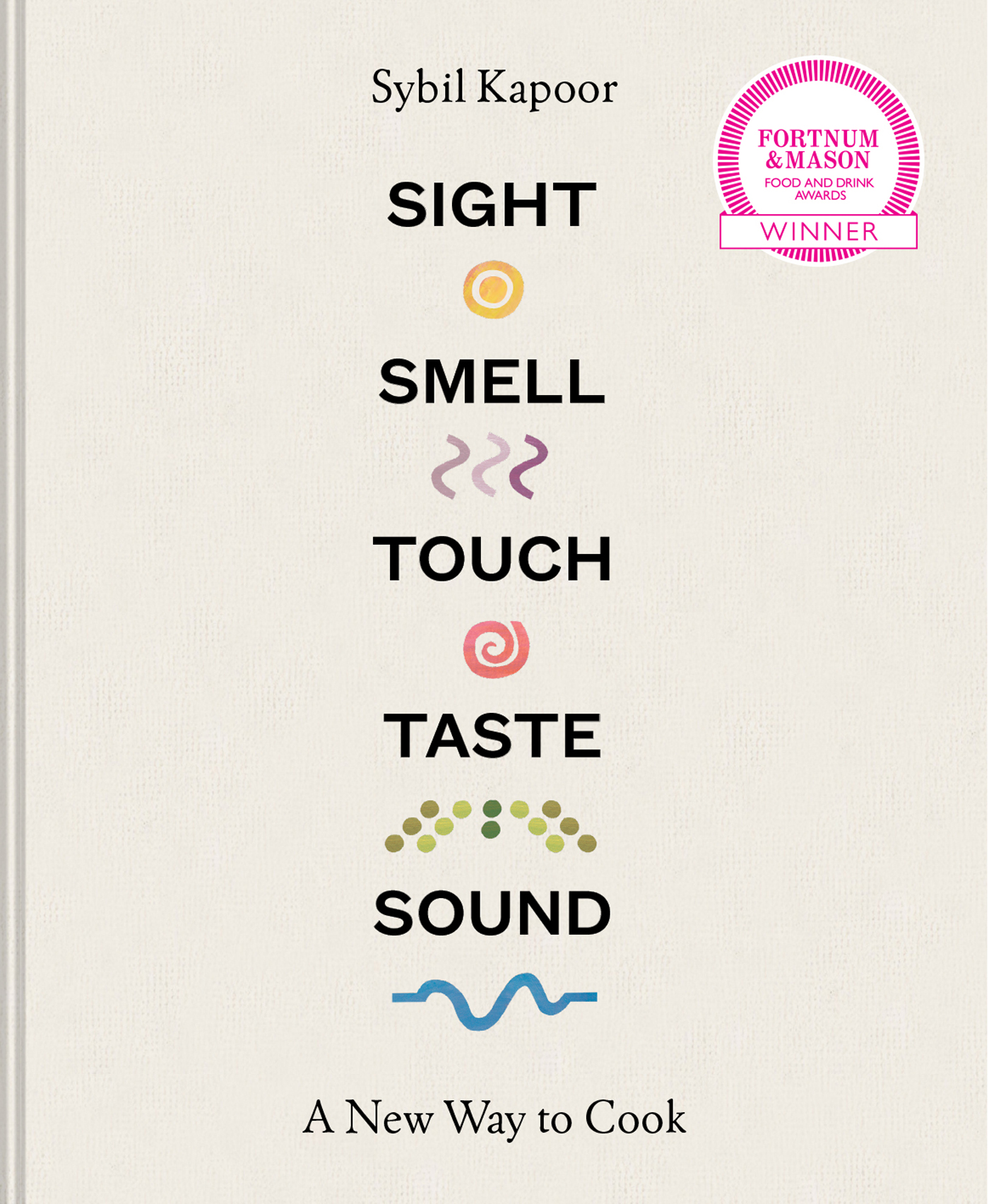Sybil Kapoor - Sight Smell Touch Taste Sound: A new way to cook
Here you can read online Sybil Kapoor - Sight Smell Touch Taste Sound: A new way to cook full text of the book (entire story) in english for free. Download pdf and epub, get meaning, cover and reviews about this ebook. year: 2018, publisher: Pavilion, genre: Home and family. Description of the work, (preface) as well as reviews are available. Best literature library LitArk.com created for fans of good reading and offers a wide selection of genres:
Romance novel
Science fiction
Adventure
Detective
Science
History
Home and family
Prose
Art
Politics
Computer
Non-fiction
Religion
Business
Children
Humor
Choose a favorite category and find really read worthwhile books. Enjoy immersion in the world of imagination, feel the emotions of the characters or learn something new for yourself, make an fascinating discovery.
- Book:Sight Smell Touch Taste Sound: A new way to cook
- Author:
- Publisher:Pavilion
- Genre:
- Year:2018
- Rating:3 / 5
- Favourites:Add to favourites
- Your mark:
Sight Smell Touch Taste Sound: A new way to cook: summary, description and annotation
We offer to read an annotation, description, summary or preface (depends on what the author of the book "Sight Smell Touch Taste Sound: A new way to cook" wrote himself). If you haven't found the necessary information about the book — write in the comments, we will try to find it.
What makes a dish look alluring? Can smell (flavour) enhance the pleasure of eating? Does the texture and sound of food change our perception? Sight Smell Touch Taste Sound is essential reading for anyone who loves to cook. Sybil Kapoor leads the reader through simplified kitchen theory and a selection of tempting recipes reveal how we can unlock the power of our five senses to make amazing meals.
Cooking is the creation of dishes using different techniques and ingredients. Underlying any recipe are five fundamental elements that form the five chapters of the book: Taste, Flavour (smell), Texture (touch and sound), Temperature (touch) and Appearance. Integral to our experience of eating, these are the building blocks of cookery throughout the world, whether you are making lemon pickle in India or porridge in Scotland. This book explains how these five elements work together and shows the reader how best to use them in everyday cooking to produce simple, delicious dishes.
The book is designed so that the reader first understands a little theory, then by cooking the recipes and conducting easy practical tests suggested throughout. Carefully cross-referenced, over 125 recipes ensure a good breadth of ideas for the domestic cook, ranging from Persian Sour Lentil Soup and Blackened Salmon with Pineapple Salsa to Mint Julep and Chilli Marmalade.
Refine your understanding of multi-sensory cooking and you will find that your kitchen prowess knows no bounds. This is Sybil Kapoors Sight Smell Touch Taste Sound essential for any cooks bookshelf.
Reviews:
The thinking persons cookbook, this explores the role of the senses in eating and cooking...It wont just make you a more aware cook but a more fulfilled and attentive one, too. Mindfulness in the kitchen. -- Telegraph Weekend Book Review
A refreshing sensory approach to inspire us to cook in an instinctive way - House & Garden magazine
A fascinating look at the benefits of multi-sensory cooking; put science into practise with delicious everyday recipes - BBC Good Food magazine
240 pages
Publisher: Pavilion (31 May 2019)
Sold by: Amazon Media EU S. r.l.
Language: English
ASIN: B07SG74QHV
Sybil Kapoor: author's other books
Who wrote Sight Smell Touch Taste Sound: A new way to cook? Find out the surname, the name of the author of the book and a list of all author's works by series.

